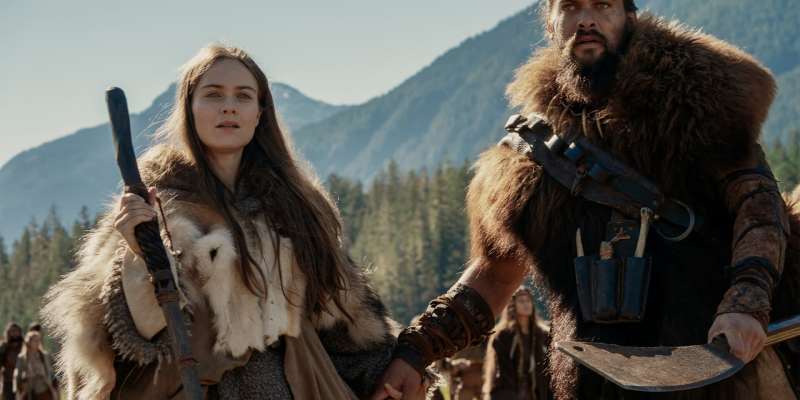A new season of the Apple TV+ show See debuts today. The show had a bit of a sluggish start, but its mythology and lore are fascinating. So hopefully this new season will be able to explore its setting in more depth. At the least, it’s definitely worth checking out See season 1 if you have Apple TV+.
See is one of those shows that can be boiled down into a straightforward elevator pitch: “A post-apocalyptic hunter-gatherer society where all of humanity is blind, and then two children are born sighted.” It’s an eight-episode adaptation of the proverb, “In the land of the blind, the one-eyed man is king.”
To See’s credit, season 1 does not do the concept of a world inhabited by and built for the non-sighted by halves. It builds a complex architectural and behavioral mythos around the methods that blind people would use to navigate the world. The actors move and interact much differently from each other than they would playing characters with sight. Their setting is laid out in such a way that someone could navigate it without sight. Even the battles are staged in such a way that it makes sense that characters can fight each other without seeing anything around them.
It’s a great setting, for sure. I recommend people see it just because it can inspire so much discussion about how the politics, religions, and economics of such a world would work. I have so many questions about how trade is conducted, what kind of currency they use (if any), and why there’s still a hereditary monarchy in place despite the complete collapse of human civilization as we know it.
But a show can have great lore and only a so-so story. The main through line of See is that Baba Voss (Jason Momoa) and Maghra (Hera Hilmar) are raising two sighted children, Haniwa (Nesta Cooper) and Kofun (Archie Madekwe), who inherited the sense of sight from their biological father, Jerlamarel (Joshua Henry). The twins want to meet their father and learn how to use sight, as he’s the only one who can teach them.
This makes both of their parents uncomfortable: Baba because he’s unhappy with his kids having a different father, and Maghra because… Actually, I don’t really know why Maghra doesn’t want the twins to venture out, aside from a general worry about their safety. Regardless, the situation is tenuous enough — especially since the rest of the village does not know that the twins have sight — that the family may eventually be forced to seek Jerlamarel out whether they want to or not.

Meanwhile, the queen of the land, Kane (Sylvia Hoeks), is also hunting for Jerlamarel. Ostensibly she wants him because the concept of sight is heresy and he’s spreading it by fathering children, but she’s also his scorned lover. She additionally faces political unrest within her kingdom. See in season 1 follows the two different stories, tied together by Jerlamarel (who’s virtually a ghost character, appearing in only two of the eight episodes) and the points at which they collide in spectacular fashion.
I feel the story will be more interesting when it’s unbound from this Apocalypse Now-style hunt for a single person and delves more into the personal relationships between the characters, their backgrounds, and how it affects their present lives. Without spoilers, the ending of See season 1 actually sets up exactly this kind of story, but it took a lot of unnecessary detours along the way.
Also, for a story in which most of the characters can’t see, the show has an unnatural obsession with the spectacle of gore. Almost every fight the characters get into, there’s blood and guts spraying everywhere, heads flying off. At one point Baba Voss pulls the top of a man’s head off like he’s opening a beer bottle, and I swear I’ve seen the exact same move used as a fatality in Mortal Kombat. It’s not bad, exactly; it’s just a little odd. The rest of the show is hauntingly beautiful, which makes these moments of bloody extravagance stand out even more.
See will be more fun to watch when it settles on exactly what kind of story it wants to tell. The first season is rife with confusing time skips and not particularly well-explained plot points, made in service of setting up the world. Now that the world is established, the series can explore the people a bit more.
